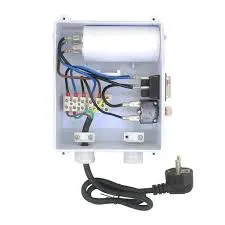The Benefits and Uses of Fibreglass Insulation Tape
Fibreglass insulation tape is a versatile and highly effective material that has become increasingly popular in various industries. Its unique properties make it an essential tool for insulation, repair, and protection applications. In this article, we will explore the benefits and uses of fibreglass insulation tape, highlighting why it has become a go-to solution for many professionals and DIY enthusiasts alike.
What is Fibreglass Insulation Tape?
Fibreglass insulation tape is a non-adhesive tape made from a blend of fibreglass filaments woven together. This combination provides incredible strength, heat resistance, and electrical insulation properties. Typically, the tape is coated with a layer of silicone or acrylic for added durability and protection against environmental factors. It comes in various widths and lengths, allowing for ease of use across different applications.
Benefits of Using Fibreglass Insulation Tape
1. High Temperature Resistance One of the most significant advantages of fibreglass insulation tape is its ability to withstand extreme temperatures. This makes it ideal for use in HVAC systems, ovens, and other high-temperature applications where traditional tape might fail. The tape can typically operate effectively in temperatures ranging from -60°C to 260°C (-76°F to 500°F) and can prevent heat loss or gain in various systems.
2. Electrical Insulation Fibreglass insulation tape is an excellent electrical insulator, making it a popular choice for electrical applications. It can be used to wrap wires and protect them from overheating and short circuits. Its non-conductive properties ensure that electrical systems operate safely and efficiently, reducing the risk of electrical fires or failures.
3. Durability and Resistance Unlike traditional insulating materials, fibreglass tape is resistant to moisture, chemicals, and UV rays. This resilience ensures that it maintains its integrity over time, even in challenging environments. Its durable nature makes it useful for both interior and exterior applications, providing long-lasting performance.
fibreglass insulation tape

4. Ease of Use Fibreglass insulation tape is lightweight and flexible, allowing users to apply it easily in tight spaces or awkward angles. It can be cut to size and applied without the mess of traditional insulation fixatives. This ease of handling makes it a preferred choice for both professional contractors and homeowners tackling insulation projects.
5. Cost-Effective Solution In the long run, using fibreglass insulation tape can be a cost-effective solution. Its long-lasting properties mean that it does not need to be replaced frequently, while its energy-efficient qualities can lead to reduced heating and cooling costs by improving the overall insulation of a system.
Common Applications
Fibreglass insulation tape is widely used in various industries and applications. Here are some common uses
- HVAC Insulation Taping together seams and joints in ductwork to prevent air leaks and improve energy efficiency. - Electrical Insulation Wrapping electrical wires and connections to ensure safety and prevent electrical shock. - Pipe Insulation Providing thermal protection for pipes that transport hot or cold liquids. - Automotive Applications Used in vehicles to wrap wires and components that are exposed to high heat or harsh conditions.
Conclusion
Fibreglass insulation tape is a highly versatile, durable, and effective material that offers numerous benefits across various applications. Its ability to withstand high temperatures, resist moisture and chemicals, and provide excellent electrical insulation makes it an indispensable tool for professionals and DIY enthusiasts alike. Whether you’re looking to improve energy efficiency in your home or ensure the safety of electrical installations, fibreglass insulation tape is a reliable choice that delivers exceptional performance.
-
XIANGFAN Rubber Tape-Ultimate Solutions for All Your Insulation NeedsNewsJun.24,2025
-
XIANGFAN Rubber Tape-Protection for Industrial and Residential ApplicationsNewsJun.24,2025
-
XIANGFAN Rubber Tape: Superior Safety and Sealing for Demanding EnvironmentsNewsJun.24,2025
-
XIANGFAN Rubber Tape: Reliable Solutions for Every Electrical ChallengeNewsJun.24,2025
-
XIANGFAN Electrical & Industrial Tape: Powering Reliability Across IndustriesNewsJun.24,2025
-
XIANGFAN Electrical & Industrial Tape: Excellence in Every ApplicationNewsJun.24,2025
